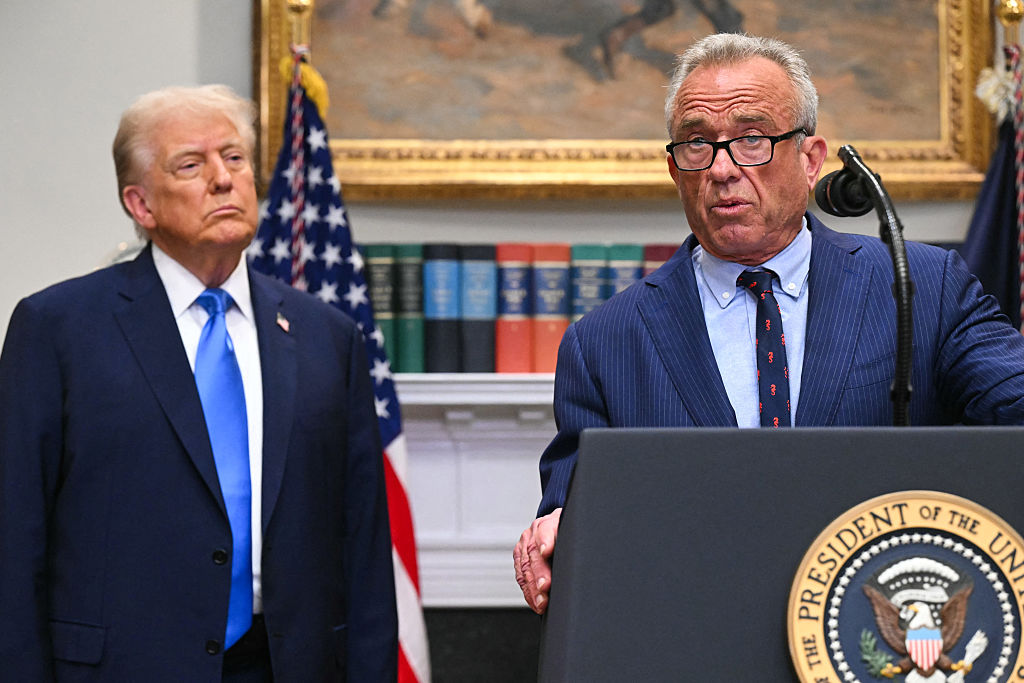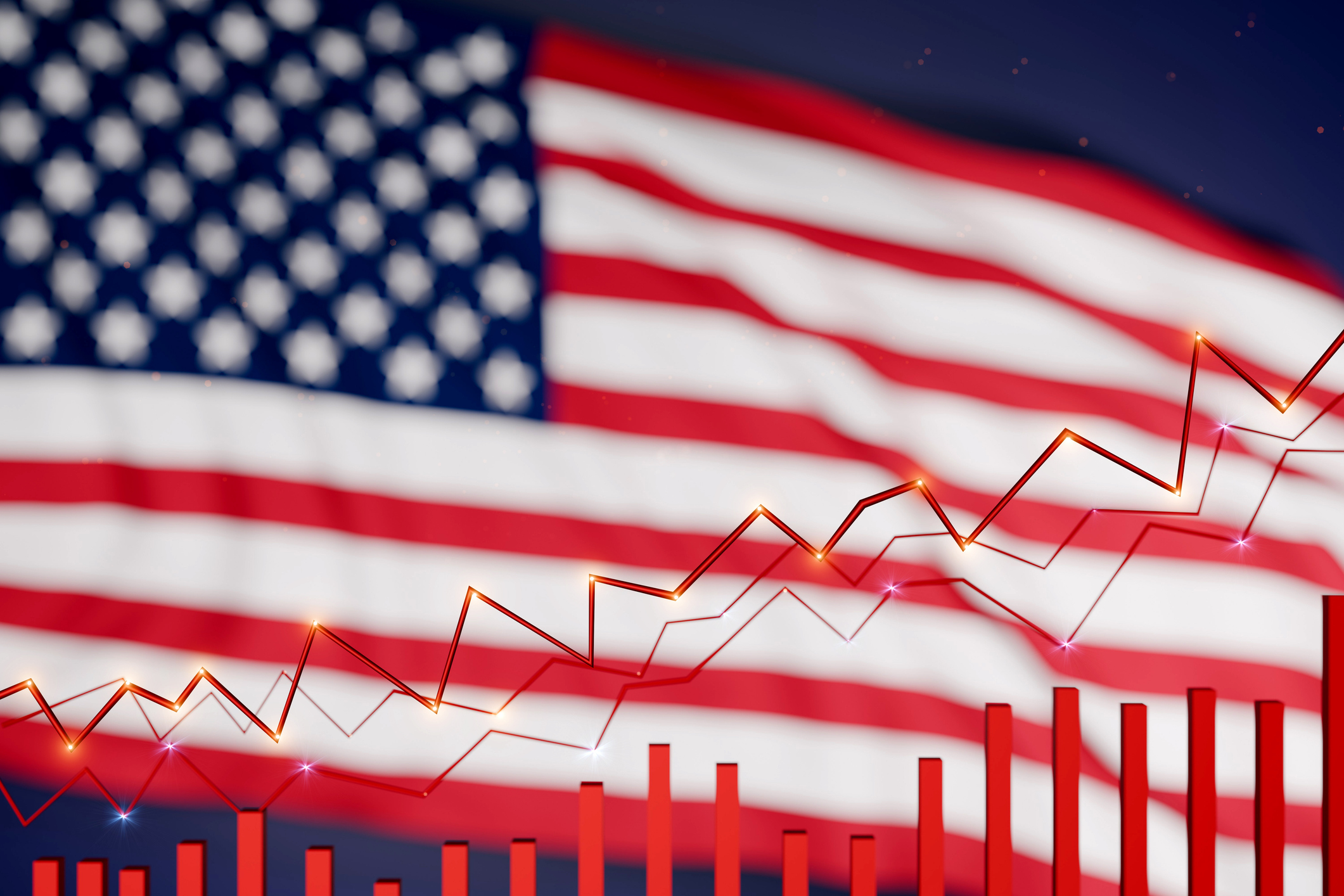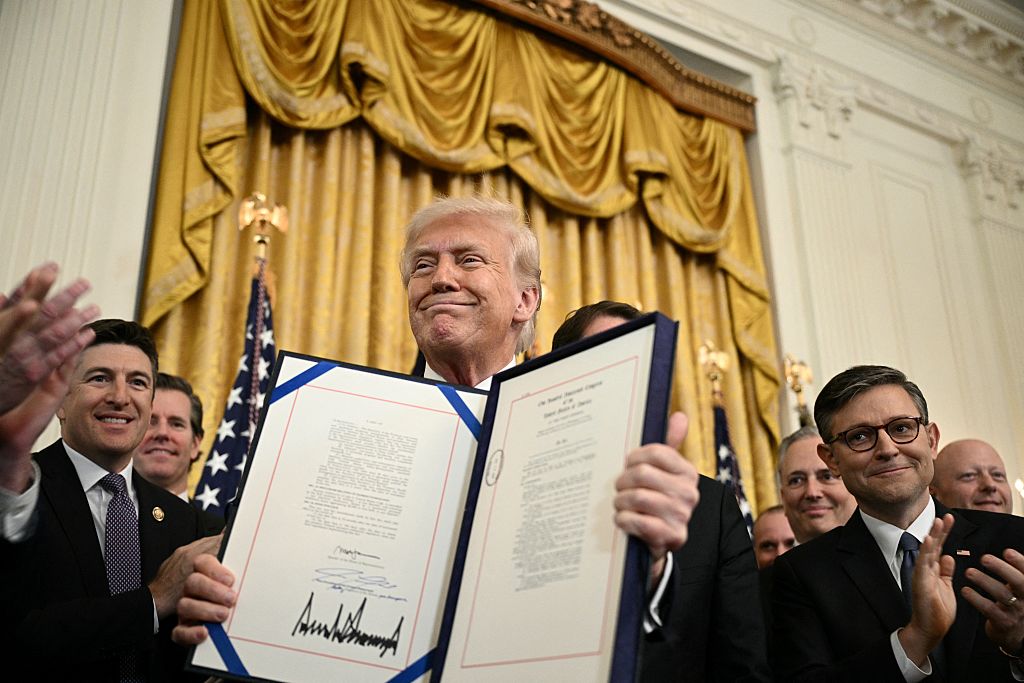Healthcare stocks look cheap, but tread carefully
Shares in healthcare companies could get a shot in the arm if uncertainty over policy in the US wanes, but are they worth the risk?


They say health is wealth, but healthcare investors might disagree. The sector has had a tough time over the past few years. Policy noise in the US has been a major headwind recently, but even before that investors’ focus was drawn elsewhere as areas such as technology raced ahead. “For the 30-year period from 1989-2019, the US healthcare sector closely tracked technology returns, and with considerably lower volatility,” notes Michael Cembalest in a research paper for JPMorgan. “Things have changed since then.”
The MSCI World Health Care index has delivered five-year annualised returns of less than 6%, lagging the broader MSCI World index at 13%. The MSCI World Information Technology index has delivered 17% over the same period. Sentiment about the sector has soured further in 2025 – and it is easy to understand why. The US is the world’s largest healthcare market and when Donald Trump was inaugurated in January, he promptly appointed a vaccine-sceptic as his health secretary. This set the tone for what was to follow.
There are three key threats: efforts to control drug pricing, tariffs and possible tax changes. There is little doubt the sector is trading cheaply. The question is whether it offers good value in light of the risks.
MoneyWeek
Subscribe to MoneyWeek today and get your first six magazine issues absolutely FREE

Sign up to Money Morning
Don't miss the latest investment and personal finances news, market analysis, plus money-saving tips with our free twice-daily newsletter
Don't miss the latest investment and personal finances news, market analysis, plus money-saving tips with our free twice-daily newsletter
Three big, beautiful policy risks
Donald Trump thinks US customers are being ripped off when it comes to drug pricing. He told reporters that a friend in London pays $88 for a weight-loss treatment that costs $1,300 in New York. So earlier this year, he published an executive order demanding “most-favoured nation” prices for US customers – an attempt to bring US prices in line with the lowest costs offered elsewhere. Pharmaceutical companies have been threatened with “every tool in the federal government’s arsenal” if they refuse to step up. The threat is vague, but has nevertheless created nervousness.
The majority of global pharmaceutical profits come from the US market – around 70%, according to the University of Southern California. Rather than cutting prices in the US, companies could simply decide to pull out of less lucrative markets, reducing access to drugs for patients and denting pharmaceuticals’ profits.
The second threat is tariffs. Trump is keen to boost US manufacturing and is using tariffs as a way of doing so. He has announced a 100% levy on imports of branded or patented drugs from 1 October, although manufacturers that are building a site in America will be exempt. Tariffs aren’t the only tax investors need to consider either. The Trump administration also has an eye on corporate income-tax loopholes that pharmaceutical companies have been exploiting. Pfizer paid zero in federal taxes in 2019 despite selling $20 billion of drugs in the US, according to an investigation from the US Senate Finance Committee. This was due to round-tripping – a mechanism whereby income from US sales is treated as foreign for tax purposes. Ways of achieving this can include using offshore manufacturing or shifting intellectual property rights to tax havens. “We’re going to try and fix a whole bunch of these tax scams,” said commerce secretary Howard Lutnick, speaking on a podcast in March.
Is this all as bad as it sounds?
Some of the risks might have been overstated. Look at “most-favoured nation” pricing. There is scepticism about whether Trump will actually be able to implement it on any kind of scale. In his first term, he tried to control the price of a handful of drugs covered by Medicare, but was blocked by a federal judge. Wide-sweeping price controls this time would almost certainly require the support of Congress – something Congress doesn’t seem to have the appetite for.
Meanwhile, pharma companies have been making moves to try and get ahead of tariffs. The measures that kick in from the start of October only affect companies that aren’t building a site in the US. In recent months, scores of companies have been making commitments. In July, Swiss and UK giants Roche and AstraZeneca both pledged $50 billion in investments in the US over the next five years, building and expanding research and development and manufacturing sites. AstraZeneca said its goal is for 50% of revenue to be generated in the US by this date.
US pharma companies have also made big commitments to domestic manufacturing. Earlier this year, Eli Lilly pledged an additional $27 billion for four new plants, and Johnson & Johnson announced a $55 billion investment over the next four years.
While this will help the industry navigate tariffs, it is possible that some companies will lose tax advantages by moving their manufacturing facilities to the US. Karen Andersen, research director at Morningstar, says analysts have been building a ramp up in tax rates into their models over the next few years as the reorganisation goes through.
Healthcare stocks are going cheap
Headwinds in the sector mean valuations look cheap. The MSCI World Health Care index is trading at around 16 times its forecast earnings, compared with 20 times for the MSCI World index. Individual names are trading on lower multiples. “Pharma stalwarts such as Merck, Pfizer and Bristol Myers Squibb trade at forward price/earnings (p/e) ratios of just eight to nine times, and biotech trades at one of the largest valuation discounts in the market,” notes Cembalest. The question is whether it is worth it given the risks.
On the one hand, we are starting to get a better sense of how Trump works. Recent stockmarket reactions have been less pronounced as a result. In July, Trump sent letters to 17 pharmaceutical companies threatening repercussions if they didn’t adopt most-favoured nation pricing. Investors largely shrugged off the news. Markets have also taken the latest tariff announcement in their stride. “Investors see more bark than bite,” says Lale Akoner, global market analyst at investment platform eToro. The objective of tariffs is to force supply chains onshore in the US – not to raise prices at the pharmacy counter. “European pharma gets nudged to localise, while US firms gain a policy tailwind.” That said, valuations are likely to remain suppressed for as long as the policy outlook is uncertain. Consider most-favoured nation pricing. Trump’s plan sounds overly ambitious, but “the problem is that the impact is so big that it’s a difficult risk for the market to ignore, no matter how unlikely it might be,” says Andersen.
Is investing in healthcare stocks worth the risk?
One fund manager who has been investing in the field for 25 years told me that every time there is nervousness around pricing in the US, the sector underperforms. “Before buying more of this stuff, investors need clarity on the earnings forecast,” says Gareth Powell, head of healthcare at Polar Capital. We could get more certainty over the coming months. The deadline given to pharma giants for complying with Trump’s price demands was 29 September. Further detail on tariffs has already emerged, but there are still questions about how regions with pre-existing trade deals will be treated.
“Headlines about the imposition of 100% tariffs on branded drugs appear to contradict the previously discussed 15% cap for European firms,” say Ailsa Craig and Marek Poszepczynski, co-managers of the International Biotechnology Trust. Until these pieces of the puzzle fall into place, bargain-hunting in the sector requires bravery.
On the plus side, there have been some bright spots. Biotech investors point to pro-industry noise from the FDA regulator, including a pilot programme to reduce the review time on new drugs and therapies from 10 to 12 months to just one to two, if they meet certain criteria. This is a marked improvement from earlier this year when investors were worried that mass firings at the FDA would result in a slower approval processes.
Active investors can also adjust their portfolios to manage the risk associated with policy threats. “The way I would look at it is on a case-by-case basis,” says Andersen. Is the company particularly reliant on government reimbursement for one of its key products? Does it have a significant manufacturing footprint outside of the US? One way the International Biotechnology Trust is managing the risk is by tilting into rare diseases, with more than 30% of the portfolio allocated to this theme. “This tends to be much more similar in price in both Europe and the US,” says Craig, meaning therapies should be less exposed to Trump’s interference with drug pricing.
Where to invest
If you are looking for broad exposure to the sector, the Polar Capital Global Healthcare Trust (LSE: PCGH) is one to consider. The trust has large overweight positions in healthcare equipment and biotechnology. It is underweight on pharmaceuticals relative to the benchmark – a position driven by concerns about the impact of Trump’s pricing threats on mega-cap pharma companies. Those who prefer passive exposure could look at the Xtrackers MSCI World Health Care ETF (LSE: XDWH), although today’s volatile policy backdrop could better lend itself to active stockpickers.
The area that looks most interesting in my view is biotech. This is where most of the innovation happens, with big pharmaceutical companies swooping in to acquire biotech firms that are developing a promising drug. We should see more merger and acquisition (M&A) activity over the coming years as a significant patent cliff-edge is looming for big pharma. Drugs worth $180 billion in annual revenue (equivalent to 12% of the global market) will be coming off patent in 2027 and 2028, according to figures cited in the Financial Times. This is putting pressure on pharma companies to shop around for new products in the biotech sector.
The International Biotechnology Trust (LSE: IBT) gives exposure to this part of the market. The managers have had strong success identifying acquisition targets, with 30 portfolio holdings having been snapped up through M&A since 2020. Investing in biotech is a risky business, but the trust is heavily weighted towards companies with drugs in late-stage clinical trials, as well as those that have completed trials already and are waiting for approval from the regulator. This makes it a good pick.
This article was first published in MoneyWeek's magazine. Enjoy exclusive early access to news, opinion and analysis from our team of financial experts with a MoneyWeek subscription.
Get the latest financial news, insights and expert analysis from our award-winning MoneyWeek team, to help you understand what really matters when it comes to your finances.
Katie has a background in investment writing and is interested in everything to do with personal finance, politics, and investing. She previously worked at MoneyWeek and Invesco.
-
 Boost for over 100,000 families on Child Benefit as new HMRC payment system rolled out
Boost for over 100,000 families on Child Benefit as new HMRC payment system rolled outThousands of households will no longer have to pay the dreaded High Income Child Benefit Charge through self-assessment
-
 Are you being haunted by the ghost of Christmas past? How festive cutbacks could boost your long-term wealth
Are you being haunted by the ghost of Christmas past? How festive cutbacks could boost your long-term wealthThe average family spends around £1,000 over the Christmas season. Here’s how much you could have gained if you had invested some of the money instead.
-
 Stock markets have a mountain to climb: opt for resilience, growth and value
Stock markets have a mountain to climb: opt for resilience, growth and valueOpinion Julian Wheeler, partner and US equity specialist, Shard Capital, highlights three US stocks where he would put his money
-
 The steady rise of stablecoins
The steady rise of stablecoinsInnovations in cryptocurrency have created stablecoins, a new form of money. Trump is an enthusiastic supporter, but its benefits are not yet clear
-
 SRT Marine Systems: A leader in marine technology
SRT Marine Systems: A leader in marine technologySRT Marine Systems is thriving and has a bulging order book, says Dr Michael Tubbs
-
 Goodwin: A superlative British manufacturer to buy now
Goodwin: A superlative British manufacturer to buy nowVeteran engineering group Goodwin has created a new profit engine. But following its tremendous run, can investors still afford the shares?
-
 A change in leadership: Is US stock market exceptionalism over?
A change in leadership: Is US stock market exceptionalism over?US stocks trailed the rest of the world in 2025. Is this a sign that a long-overdue shift is underway?
-
 A reckoning is coming for unnecessary investment trusts
A reckoning is coming for unnecessary investment trustsInvestment trusts that don’t use their structural advantages will find it increasingly hard to survive, says Rupert Hargreaves
-
 Modern Monetary Theory and the return of magical thinking
Modern Monetary Theory and the return of magical thinkingThe Modern Monetary Theory is back in fashion again. How worried should we be?
-
 Metals and AI power emerging markets
Metals and AI power emerging marketsThis year’s big emerging market winners have tended to offer exposure to one of 2025’s two winning trends – AI-focused tech and the global metals rally
